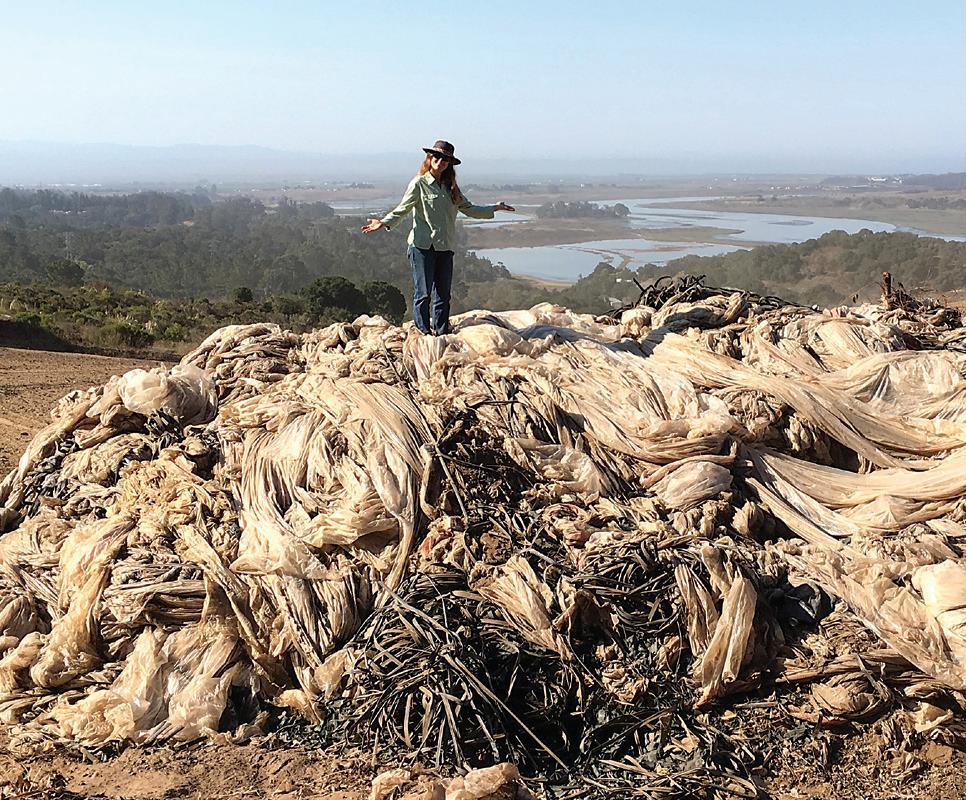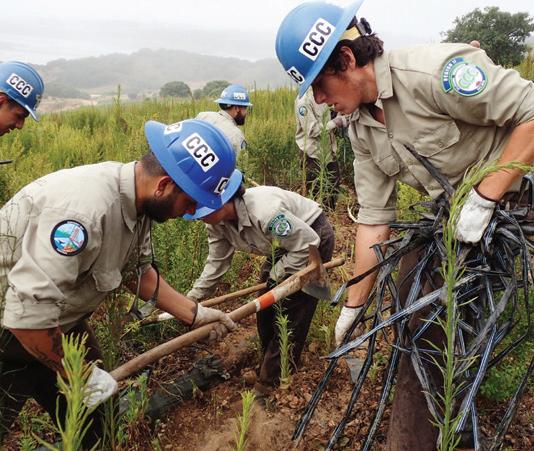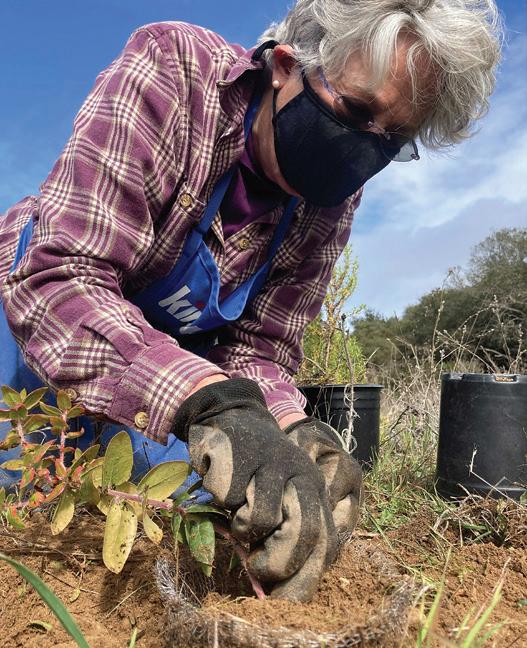
1 minute read
Sand Hill Farm: Then and Now
Photos by Ken Collins / ESF
It’s been five years since the Elkhorn Slough Foundation acquired the 107-acre Sand Hill Farm property. Back then, this was an abandoned strawberry farm. The steep, sandy hillsides were eroding, sending sediment into Reserve wetlands and the estuary. Tons of drip tape and abandoned farm debris littered the fields, with enormous caches of plastic found buried in adjacent woodlands.
Today, just halfway through the projected ten-year restoration time frame, Sand Hill Farm is a completely different place. With the early help of volunteers, California Conservation Corps (CCC) crews, and heavy equipment, the ESF land team cleared over a hundred tons of abandoned plastic and farm debris from the property, re-contoured the slopes, and improved erosion control. More recently, we’ve been planting and watering native plants — like coastal live oak, Pajaro manzanita, and Eastwood’s goldenbush. Meanwhile, native wildflowers like sky lupine and California poppy have popped up on their own.
Sand Hill Farm is a beautiful testament to how, working together, we can make a real and lasting difference for the land, water, and wildlife of Elkhorn Slough.

One of ESF’s first steps toward restoring Sand Hill Farm was removing trash.

We cleared more than a hundred tons of plastic and farm debris from Sand Hill Farm …


… with lots of help from volunteers and CCC crews.

After repairing erosion damage and bringing in heavy equipment to re-contour the steep slopes …

… we planted cover grasses.



The cover grasses and improved erosion control held soil in place, protecting the estuary and allowing native plants to becomereestablished (sometimes with a bit of help from ESF staff andvolunteers.)










